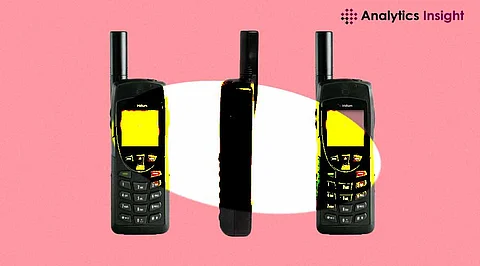

In a world connected by the seamless communication of smartphones on 4G and 5G networks everywhere, satellite phones now seem to be a lonely remnant. In fact, going into 2025, these devices will still be serving a class that is very special and absolutely necessary for some of the most remote and disaster-prone places on Earth. With new satellite technologies and high demand for reliable communication in harsh conditions, the question remains: Are satellite phones a worthwhile investment in 2025?
In particular, satellite phones are important to those working in remote areas because they connect directly to satellites in orbit rather than terrestrial cell towers. These devices have long been indispensable for many people engaged in agriculture, forestry, search and rescue, and adventure tourism. However, given the growth of global cellular networks (4G and 5G) and the rapid spread of WiFi connectivity, there is still a need for satellite phones.
The answer is yes, but mostly for specific use cases. In areas where cell service is sparse or nonexistent—deep wilderness, the open ocean, or during natural disasters—satellite phones remain an irreplaceable lifeline. When hurricanes, earthquakes, or wildfires strike, knocking out power lines and cellular towers, satellite phones are often the only means of communication. These phones can sometimes make all the difference for adventurers trekking through the Himalayas or sailing across the Pacific. They provide the only voice and text contact when all else fails.
Traditional satellite phones are not without criticism, as they come with a bit bulky and highly priced designs, and there's minimal functionality with the traditional design. The rise of Low Earth Orbit (LEO) satellite networks in companies such as SpaceX's Starlink and OneWeb is proving to be the next major boom for satellite technology as they project to offer much faster and more dependable communication worldwide.
LEO satellites are located relatively close to the earth's surface compared to their geostationary counterparts, dramatically reducing latency and improving signal quality. Modern satellite phones can have more explicit voice calls and provide reliable data services, such as basic internet browsing and messaging in remote areas. For the first time, satellite phones have become a possibility for those who need more than emergency communication, as they rival traditional mobile phones in performance and reliability.
Satellites are also much smaller, lighter, and friendlier to users. Most of the devices available on the market now are a combination of both satellite and cellular technologies. These devices automatically switch to either network based on the availability of the network in a particular location. This hybrid technology makes the satellite phone more flexible and adaptable for seamless connectivity with either network.
The cost of satellite phones is one of the primary obstacles to mass adoption. This is because, although smartphones can be purchased at very reasonable prices, satellite phones are exponentially expensive. The initial purchase cost per model goes from $500 to $2,000, depending on the model and features. On top of that, satellite phone service plans are much more expensive than regular mobile plans. Their monthly fees range from $50 to $100, depending on the plan and usage.
The investment may be worth it for those who spend a lot of time in remote areas, such as explorers, emergency responders, or off-grid workers. Connectivity in crucial moments can, at times, be priceless, especially when it's life or death. This high-cost satellite phone becomes meaningless for most of those who rarely leave places with service.
Since the technology for satellite phones has evolved, people have come to have an alternative method for connectivity through satellite hotspot devices. The two products currently being utilized are Iridium Go and Globalstar Sat-Fi2. A user is capable of connecting the smartphone with satellite networks and reaching basic text messaging and internet services without needing a dedicated satellite phone. Such equipment is much cheaper and far more accessible for occasional users or only occasional satellite connectivity.
There's another alternative, which is personal satellite communication devices. These are becoming increasingly common in the market, such as the Garmin inReach or the Zoleo. These handheld gadgets provide two-way communications and SOS emergency messaging; thus, they are even more of an accessory for hiking enthusiasts or travelers seeking backups in their communication systems. They certainly lack the voice calling option in most traditional satellite phones but offer the basic functionality of emergency communication with cost and convenience.
As we are about to enter 2025, satellite phones are still vital to those in remote, disaster-prone, or off-grid areas. For emergency responders, adventurers, and people working in extreme conditions, satellite phones offer an unmatched level of reliability and security. Advances in satellite technology, such as LEO satellites, have made these phones more efficient, accessible, and versatile than ever before, and hybrid models combining satellite and cellular service have made them even more practical.
There's a high cost of satellite phones and service plans that most people cannot bear in terms of day-to-day use. The alternatives can be satellite hotspots and personal communication devices that can serve as cheaper options for sporadic connections. Ultimately, the decision to buy a satellite phone lies with the end-user and their needs. For those often out of cell network reach, satellite phones could remain the lifeline, at least for quite a while longer. Others may choose better and less expensive ways for alternative connectivity.
